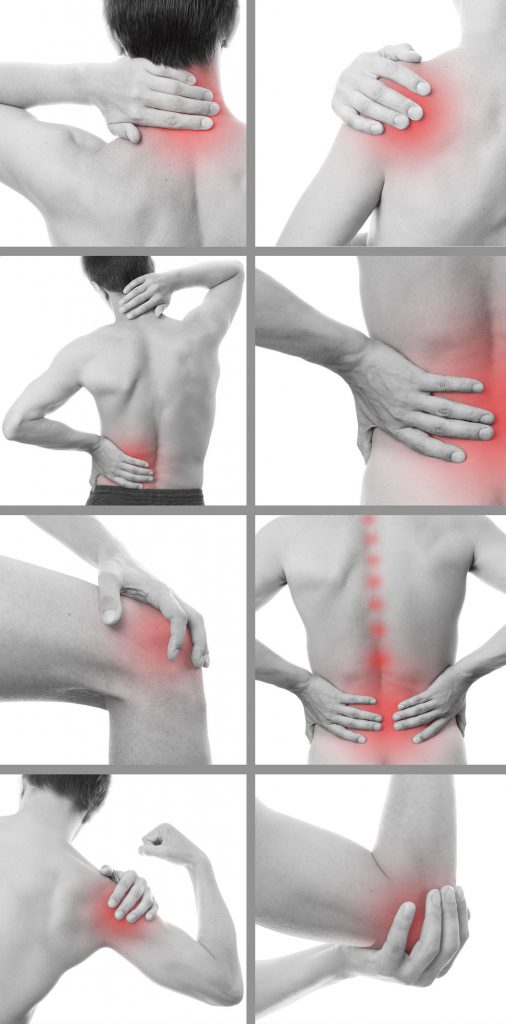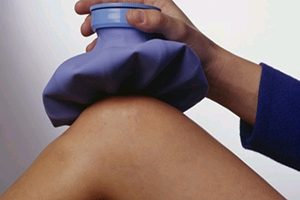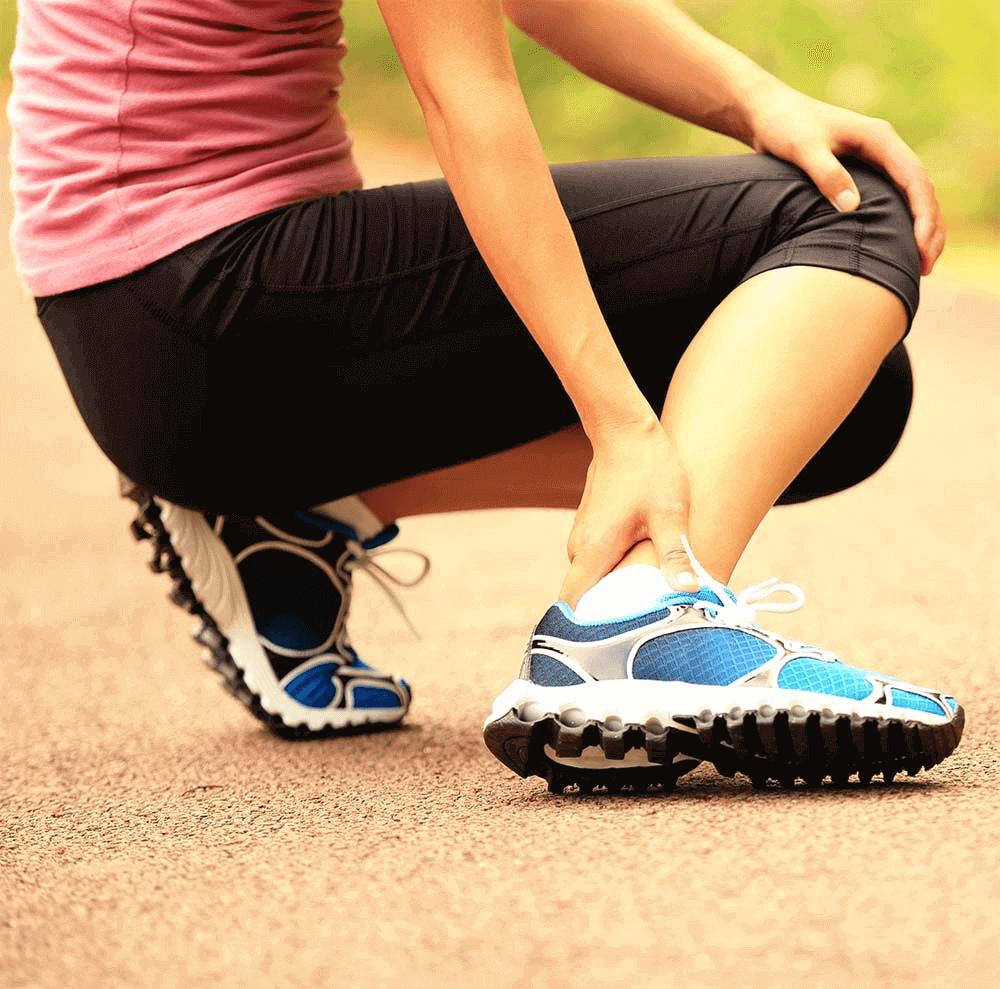
Sports Injuries

What are sports injuries?
“Sports injuries” are injuries that occur during the practice of a sport or during physical exercise. Some of them happen accidentally. Others may be the result of poor training practices or improper use of training equipment. Some people hurt themselves when they are not in good physical condition. In certain cases, injuries are due to the lack or scarcity of warm-up or stretching exercises before playing or exercising. The most common sports injuries are:
- Sprains (Ligament injury), Strains (Muscle or tendon injury) and Tear (Ligament, muscle or tendon injury)
- Knee injuries
- Myositis (Inflammation in muscles)
- Achilles tendon injuries
- Shin splint (Pain along the tibia or shinbone)
- Fractures
- Dislocations

What is the difference between acute injuries and chronic injuries?
There are two types of sports injuries: acute and chronic. Acute injuries happen suddenly while playing or exercising. The most common acute injuries include sprained ankles, strained backs, and broken bones. Symptoms of an acute injury include:
- Sudden severe pain
- Swelling
- Not being able to lean on one leg, knee, ankle, or foot
- An arm, elbow, wrist, hand, or finger that is very sore
- Difficulties in the normal movement of a joint
- Extreme weakness in one leg or arm
- A bone or joint that is visibly out of place
Chronic injuries occur after playing sports or exercising for a long time. Symptoms of a Chronic injury include:
- Pain while playing
- Pain while exercising
- Mild pain even at rest
- Swelling
What is the difference between acute injuries and chronic injuries?
There are two types of sports injuries: acute and chronic. Acute injuries happen suddenly while playing or exercising. The most common acute injuries include sprained ankles, strained backs, and broken bones. Symptoms of an acute injury include:
- Sudden severe pain
- Swelling
- Not being able to lean on one leg, knee, ankle, or foot
- An arm, elbow, wrist, hand, or finger that is very sore
- Difficulties in the normal movement of a joint
- Extreme weakness in one leg or arm
- A bone or joint that is visibly out of place
Chronic injuries occur after playing sports or exercising for a long time. Symptoms of a Chronic injury include:
- Pain while playing
- Pain while exercising
- Mild pain even at rest
- Swelling
What should I do if I am injured?
Never try to “endure” the pain of a sports injury. Stop playing or exercising when you feel pain. Continuing can only make the injury worse. Some injuries should be immediately examined by the doctor. Other injuries can be treated by yourself.
Call a doctor when:
- The injury causes severe pain, swelling, or numbness
- You cannot support any weight on the injured area
- A previous injury hurts
- A previous injury swells
- The joint does not feel normal or feels unstable.
If you don’t have any of these symptoms, you can safely treat the injury at home. If pain or other symptoms get worse, you should call a doctor. Use the RICE method (Ice, Compression, Elevation, and Rest) to relieve pain, reduce swelling, and speed recovery.
Follow these four steps as soon as the injury occurs and continue to do so for at least 48 hours.
- Ice. Put an ice pack on the injured area for 20 minutes, four to eight times a day. For this, you can use a cold compress or an ice pack. Also, you can use a plastic bag filled with crushed ice and wrapped in a towel. Remove the ice after 20 minutes to avoid a cold burn.
- Compression. Distribute equal pressure (compression) over the injured area to help reduce swelling. You can use an elastic bandage, a special boot, a cast, or a splint. Ask your doctor which of these is best for your injury.
- Elevation. To help reduce swelling, put the injured area on a pillow, making sure it is at a level higher than your heart.
- Repose. Cut back on your regular activities. If you have injured your foot, ankle, or knee, do not lean on that leg. Help yourself with a crutch. If the right foot or ankle is injured, use the crutch on the left side. If the left foot or ankle is the one that is injured, then use the crutch on the right side.

What should I do if I am injured?
Never try to “endure” the pain of a sports injury. Stop playing or exercising when you feel pain. Continuing can only make the injury worse. Some injuries should be immediately examined by the doctor. Other injuries can be treated by yourself.

Call a doctor when:
- The injury causes severe pain, swelling, or numbness
- You cannot support any weight on the injured area
- A previous injury hurts
- A previous injury swells
- The joint does not feel normal or feels unstable.
If you don’t have any of these symptoms, you can safely treat the injury at home. If pain or other symptoms get worse, you should call a doctor. Use the RICE method (Ice, Compression, Elevation, and Rest) to relieve pain, reduce swelling, and speed recovery.
Follow these four steps as soon as the injury occurs and continue to do so for at least 48 hours.
- Ice. Put an ice pack on the injured area for 20 minutes, four to eight times a day. For this, you can use a cold compress or an ice pack. Also, you can use a plastic bag filled with crushed ice and wrapped in a towel. Remove the ice after 20 minutes to avoid a cold burn.
- Compression. Distribute equal pressure (compression) over the injured area to help reduce swelling. You can use an elastic bandage, a special boot, a cast, or a splint. Ask your doctor which of these is best for your injury.
- Elevation. To help reduce swelling, put the injured area on a pillow, making sure it is at a level higher than your heart.
- Repose. Cut back on your regular activities. If you have injured your foot, ankle, or knee, do not lean on that leg. Help yourself with a crutch. If the right foot or ankle is injured, use the crutch on the left side. If the left foot or ankle is the one that is injured, then use the crutch on the right side.
What is the treatment for sports injuries?
Treatment often begins with the RICE method. Here are some other things your doctor might recommend for treating the injury:
Nonsteroidal Anti-inflammatory Drugs (NSAIDs)
Your doctor will suggest that you take one of the non-steroidal anti-inflammatory drugs (NSAIDs), such as aspirin, ibuprofen, ketoprofen, or naproxen. These medications reduce swelling and pain, and you can buy them at the pharmacy. Another common drug is acetaminophen. This may relieve pain, but it will not reduce swelling.
Immobilization
Immobilization is a common treatment for sports injuries. This helps keep the injured area motionless and prevents further damage. Slings, splints, casts, and leg immobilizers are used to immobilize patients with sports injuries.
Surgery
In some cases, surgery is necessary to correct sports injuries. Surgery can correct torn tendons and ligaments or put broken bones in the correct position. Most injuries do not need surgery.
Rehabilitation (Exercise)
Rehabilitation is an important part of treatment. This includes exercises that step by step help the injured area return to normal. Certain movements of the injured area help to improve it. Rehabilitation should begin as soon as possible. The exercises begin with a series of gentle movements of the injured area. The next stage corresponds to stretching. After a while, weights can be added to strengthen the injured area.
As the injury heals, a scar forms in the tissue. Over time, the scar shrinks. As it shrinks, the injured tissue contracts. When this happens, the injured area becomes hard or stiff. This is the time when you are most at risk of injuring yourself again in the same area. You should practice muscle stretches every day and also as part of your warm-up before playing or exercising.
Do not play sports until you are sure you can stretch the injured area without pain, swelling, or stiffness. When playing again, start slowly. Increase the activity little by little until you reach your normal condition.
Repose
Although it is good to start moving the injured area as soon as possible, you should also rest after an injury. All injuries take time to heal; proper rest helps this process. Your doctor can guide you in finding the proper balance between rest and rehabilitation.
Other therapies
Other common therapies that help with the healing process of sports injuries include the use of: mild currents of electricity (electrostimulation), cold compresses (cryotherapy), heat compresses (thermotherapy), sound waves (ultrasound), and massage.






How can sports injuries be prevented?
The following tips can help you avoid sports injuries:
- When bending over, don’t bend your knees past the midpoint.
- Don’t twist your knees when stretching. Keep your feet flat on the surface as much as possible.
- When jumping, bend your knees when landing.
- Warm-up exercises are essential before practicing any sport.
- Do stretching exercises before playing sports or exercising.
- Don’t try too hard.
- Do cool down exercises after playing sports or exercising
- Wear shoes that are appropriate size, provide stability and absorb shock.
- Use surfaces that are as soft as possible for exercise; don’t run on asphalt or concrete
- Run on flat surfaces.
For adults:
- Don’t be a “weekend warrior.” Do not try to do the physical activity that corresponds to a week in one or two days.
- Learn correctly the sport you practice. This will help reduce the risk of “overuse” injuries.
- Wear protective gear.
- Know the limits of your body.
- Increase the level of exercise gradually.
- Strive for full-body exercises, including cardio, strength and flexibility exercises.
For parents and coaches:
- Develop a good physical condition to be able to play sports.
- Go to the doctor for a physical exam before you start playing sports.
- Follow the rules of the game.
- Wear protective gear that is appropriately sized and appropriate for the sport.
- Learn to use athletic equipment.
- Don’t play when you are very tired or in pain.
- Always warm-up before playing.
- Always do cool down exercises after playing.
For children:
- Group children by skill level and body size, not by age, especially when it comes to contact sports.
- Stop pressuring the child with the sport. Do not force the child to play a sport that he does not like or is not trained to do.
- Look for sports programs that have certified athletic trainers.
- Make sure all children receive a physical exam before playing.
- Don’t let an injured child play.
- Take the child to see a doctor, if necessary.
- Provide a safe environment to play sports.

What research is being done on sports injuries?
Today, treatments for a sports injuries are much better than in the past. Most people who are injured are able to play sports and exercise again. Doctors have new treatments for sports injuries. Some of these include:
- Arthroscopy (fiber optics are inserted through a small incision to see inside the joints).
- Tissue bioengineering (the person’s own tissues or cells are used to help heal injuries).
- Direct pain relief (pain-reducing medication patches applied directly to the injured area).
- Advanced imaging techniques (such as x-rays) that lead to better diagnosis and treatment.
What research is being done on sports injuries?
Today, treatments for a sports injuries are much better than in the past. Most people who are injured are able to play sports and exercise again. Doctors have new treatments for sports injuries. Some of these include:
- Arthroscopy (fiber optics are inserted through a small incision to see inside the joints).
- Tissue bioengineering (the person’s own tissues or cells are used to help heal injuries).
- Direct pain relief (pain-reducing medication patches applied directly to the injured area).
- Advanced imaging techniques (such as x-rays) that lead to better diagnosis and treatment.
